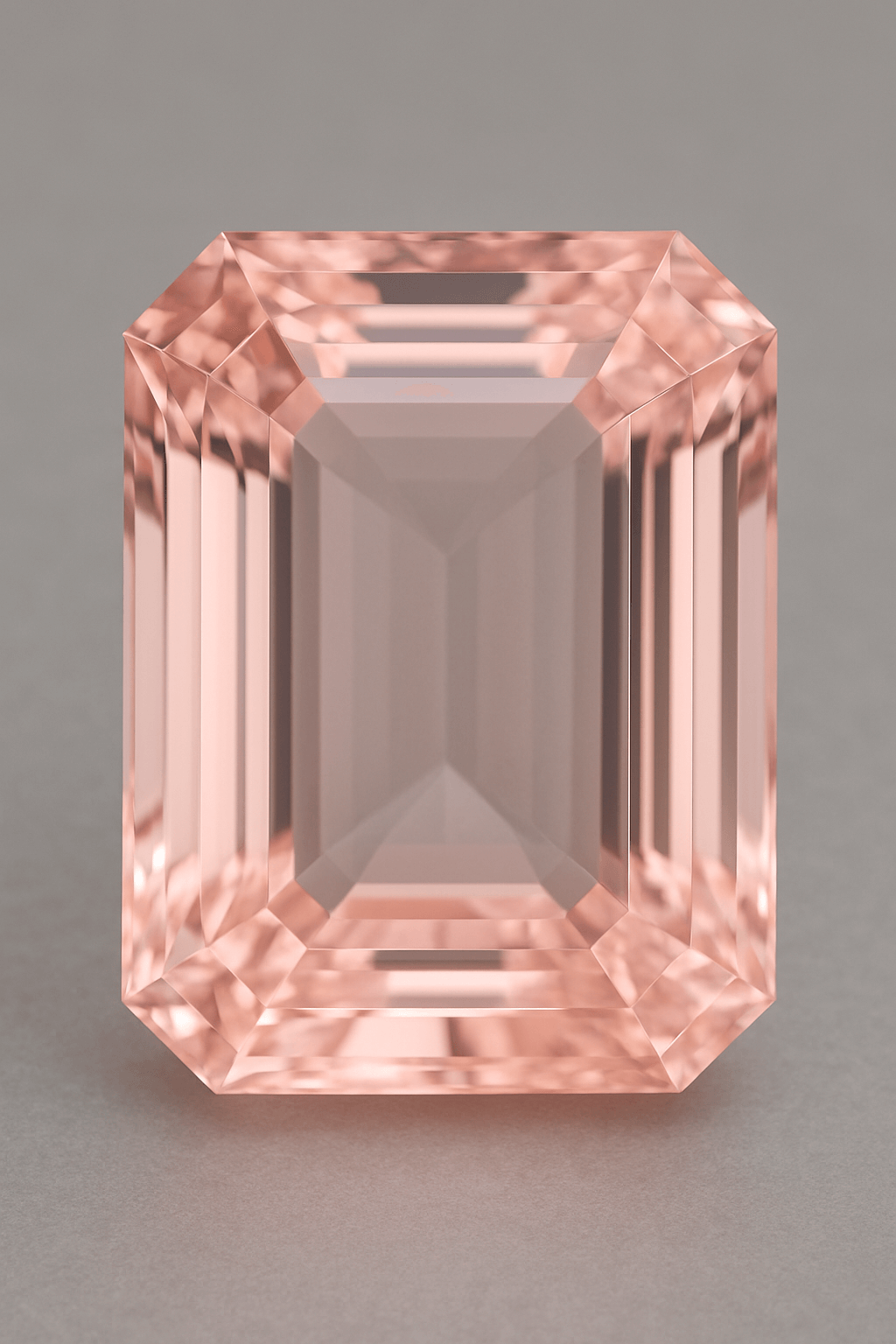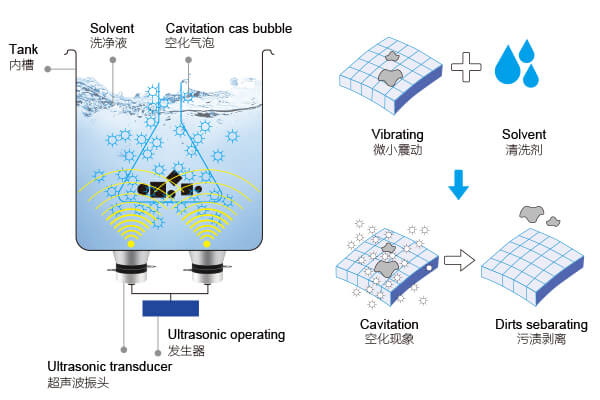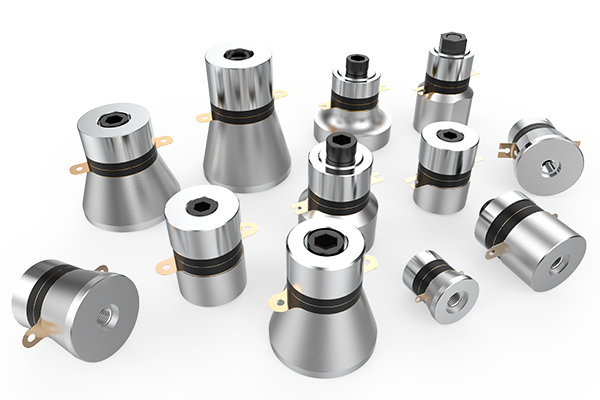Morganite, with its soft blush hues and serene glow, has become one of the most beloved gemstones in modern jewelry. Its popularity surged dramatically in recent years, especially among millennials seeking alternatives to traditional diamonds. But morganite’s charm goes far beyond trends—it carries a unique combination of delicacy, strength, and aesthetic warmth that has made it a favorite in engagement rings, heirloom pieces, and luxury fashion collections alike.

Belonging to the beryl family—the same mineral group as emerald and aquamarine—morganite is naturally tinted with traces of manganese, giving it its distinctive peach-pink to rose hues. On the Mohs scale of hardness, morganite typically scores between 7.5 and 8, which technically qualifies it as a durable gemstone suitable for everyday wear. However, hardness alone doesn’t tell the full story.
Morganite is often cut into large, faceted stones to emphasize its pastel brilliance. Its transparency and tendency to exhibit high clarity mean that even the smallest blemishes can affect its overall appearance. That’s part of what makes cleaning such an important aspect of morganite care. Any buildup of residue from skin oils, lotions, or environmental pollutants can dull its shine, masking its beauty under a layer of grime.
Whether you own a dainty solitaire morganite pendant or a halo ring surrounded by diamonds, understanding how to properly clean it is vital to preserving both its aesthetics and longevity. And while traditional cleaning methods exist, many turn to ultrasonic cleaners as a modern, efficient alternative. But is morganite truly compatible with ultrasonic cleaning technology? That’s the question we’ll explore in depth.
Why Cleaning Morganite Matters
Jewelry serves not only as decoration but as an extension of personality, sentiment, and memory. Morganite, often gifted as a symbol of divine love and compassion, carries emotional as well as monetary value. Unfortunately, like all worn gemstones, it doesn’t stay pristine on its own.
Even after a few wears, oils from your fingers, residues from hair products, hand creams, perfumes, and even exposure to everyday dust can quickly leave a noticeable film on morganite’s surface. Unlike darker stones such as garnet or sapphire, morganite’s pale coloring makes these impurities far more visible. What was once a clear, glowing stone can suddenly look cloudy or lifeless.
The loss of brilliance isn’t just a cosmetic issue either. If left uncleaned for too long, this buildup can become more stubborn over time, embedding itself into the tiny crevices of a stone’s setting. This can increase the risk of long-term wear, especially if grit particles act abrasively on the stone or metal.
Moreover, some morganite stones are set in rose gold or other soft metals, which further emphasizes the importance of gentle but effective cleaning. While a quick wipe with a cloth might remove fingerprints, it rarely lifts deeper grime, especially around prongs or under the pavilion (the lower part of the gemstone).
That’s why so many people look toward ultrasonic cleaning—because on paper, it offers the kind of deep, non-contact cleaning that traditional methods struggle to achieve. But morganite is not just any gemstone, and whether it belongs in that cleaning bath requires a more nuanced approach.
Traditional Cleaning Methods and Their Limitations
If you’ve ever owned fine jewelry, chances are you’ve heard the classic cleaning advice: warm water, mild soap, and a soft-bristle toothbrush. It’s the go-to method recommended by most jewelers for general at-home care, and in many cases, it works reasonably well.
For morganite, this method is generally safe. You soak the ring or pendant in a bowl of soapy water for about 20 to 30 minutes, gently scrub around the stone with a baby toothbrush, rinse under lukewarm water, and dry it with a lint-free cloth. This is effective for mild buildup, and when done regularly, it helps keep the stone in good condition.
But there’s a catch: this method often falls short when it comes to thorough cleaning. Intricate ring settings—especially those featuring halos, under-gallery details, or antique-style engraving—trap dirt in places you can’t reach with a brush. Even the softest bristles risk scratching the stone or catching on delicate prongs if used too forcefully.
What’s more, not everyone has the patience or time to clean jewelry by hand every few weeks. That’s where ultrasonic cleaners come in—they promise convenience and deep cleaning in a matter of minutes. Yet this convenience introduces a new question: is it too aggressive for morganite?
To answer that, we must first understand how ultrasonic cleaning works—and why its power is both its greatest strength and potential risk.
What Is Ultrasonic Cleaning?
Ultrasonic cleaning is a technology that sounds futuristic, but its roots go back more than half a century. At its core, it uses high-frequency sound waves—typically in the range of 20 to 40 kHz—transmitted through a cleaning liquid (usually water mixed with a mild detergent) to create microscopic bubbles. These bubbles form and collapse rapidly in a process called cavitation.

Cavitation is powerful. When these microbubbles implode near the surface of an object, they release bursts of energy that dislodge dirt, oils, and debris—even in places that are completely inaccessible to brushes or cloths. This is why ultrasonic cleaners are used in hospitals for sterilizing surgical tools, in labs for glassware, and in factories for cleaning intricate metal parts.
For jewelry, the same principle applies. An ultrasonic bath can reach beneath the prongs of a ring, inside delicate filigree, and around gem facets—all without direct physical contact. For pieces made of hard metals and tough gemstones like diamonds or sapphires, ultrasonic cleaning is often a perfect solution.
But morganite is not a diamond.
While it’s not exactly fragile, morganite isn’t immune to cavitation stress. Whether ultrasonic cleaning is safe depends on a delicate balance between the stone’s internal structure, clarity characteristics, setting style, and the condition of the cleaner itself. Misjudging these factors can lead to anything from minor surface dulling to internal fractures or even dislodgement from the setting.
So let’s dive deeper into the question at the heart of this article: Is it truly safe to clean morganite in an ultrasonic cleaner?
Is It Safe to Clean Morganite in an Ultrasonic Cleaner?
This is where things get interesting. The short answer? Sometimes. The long answer? It depends on the unique qualities of the morganite in question.
On the surface, morganite seems like a good candidate for ultrasonic cleaning. Its hardness rating of 7.5 to 8 means it’s resistant to everyday scratches and has decent structural integrity. However, gemstone durability is not only about hardness. It’s also about internal clarity, structural inclusions, and how the stone was treated during its preparation for market.
Gemological laboratories like GIA and AGTA often caution against using ultrasonic cleaners on gemstones with potential internal fractures, extensive inclusions, or certain types of treatments. That’s because ultrasonic waves don’t discriminate—they apply force across the entire surface and into the interior of the stone via the cleaning solution. If a morganite has internal stress points or microfractures, cavitation pressure can worsen these imperfections, leading to chips, cracks, or clouding.
Moreover, heat is another variable. Some ultrasonic machines include heating elements that bring the solution to 50°C (122°F) or more. While morganite isn’t heat-sensitive in the same way as opal or turquoise, rapid temperature fluctuations—especially in a stone that has inclusions or has been fracture-filled—can cause expansion and stress failure.
So the real determinant here is not just the morganite itself but the context: is it treated? Is it internally flawless? Is it set securely? Is your ultrasonic unit well-calibrated? And perhaps most importantly—are you cleaning it yourself, or are you handing it to a professional?
When all variables are favorable, ultrasonic cleaning can be safe and effective. But ignoring these nuances puts your gemstone at unnecessary risk.

The Main Risks: Fractures, Inclusions, and Settings
To truly understand when ultrasonic cleaning may become a problem for morganite, we need to look beneath the surface—literally.
Most morganite sold on the market is not treated with harsh chemical enhancements, but some are heat-treated to deepen their pink tone. This is generally stable and not a concern. However, a small number may be fracture-filled to enhance clarity, especially if the original rough had visible cracks or fissures. These treatments involve injecting resins or oils into internal fractures, which can become unstable under ultrasonic stress.
Even untreated morganite may contain natural inclusions. These inclusions might be wisps, feathers, or liquid-filled cavities. They don’t necessarily affect the beauty of the stone, but they can weaken its structural integrity. Ultrasonic cavitation creates sudden changes in pressure that can exploit these internal features, sometimes causing small fractures to spread or become visible.
The setting style matters too. In many cases, morganite is mounted in claw prong or halo settings, which look delicate and feminine but aren’t always the most secure. The rapid vibration of an ultrasonic bath, especially if the basket isn’t properly padded, can cause slight movement. Over time, this may loosen the prongs or even cause the stone to fall out during cleaning.
It’s not uncommon for jewelry owners to report that their morganite ring came out of the cleaner with a loose stone—not because the machine broke it, but because pre-existing weaknesses were aggravated.
That’s why inspecting your jewelry before any ultrasonic session is crucial. Check for loose prongs, visible inclusions, or existing chips. When in doubt, it’s safer to choose a gentler method—or let a jeweler handle it.
Safe Ultrasonic Cleaning for Morganite: Best Practices
Despite the risks, ultrasonic cleaning doesn’t have to be off-limits. When used correctly and cautiously, it can be a highly effective way to keep morganite jewelry radiant. The key is to understand and respect the limits of the material.
The first golden rule is: only clean untreated, inclusion-free morganite in a well-calibrated ultrasonic cleaner. If you’re not sure whether your gemstone is fracture-filled or naturally included, it’s best to consult with a jeweler or request a gemological certificate.
Secondly, control the environment. Many consumer-grade ultrasonic cleaners have built-in heating functions, but this feature isn’t always needed—especially for gemstones like morganite. If your machine allows it, keep the temperature below 40°C (104°F) to avoid thermal shock. Even better, use the cleaner without activating the heater at all.
Next, limit the cleaning time. A full 10-minute cycle is rarely necessary. In most cases, 1–3 minutes is enough to dislodge oils and grime. Prolonged exposure only raises the risk of damage while offering little additional benefit.
Be mindful of power. Higher-frequency cleaners (above 40 kHz) tend to produce smaller, gentler cavitation bubbles. These are more suitable for delicate items. If you’re using a 28 kHz or 40 kHz unit, that’s already considered a medium-to-gentle setting. Avoid industrial-grade low-frequency machines unless you know exactly what you’re doing.
Finally, use the right cleaning solution. Stick with a neutral, jewelry-safe detergent. Harsh chemicals like ammonia or alcohol-based solutions are unnecessary and can be harmful to both the stone and the setting.
A quick checklist before placing your morganite in the machine:
- No visible fractures or inclusions
- Secure setting with no loose prongs
- Low or no heat
- Jewelry-safe detergent
- Short cleaning time
- Gentle drying afterward (no heat guns, no ultrasonic dryers)
By following these precautions, ultrasonic cleaning can become a reliable tool in your jewelry care routine—one that enhances rather than endangers your morganite.
When You Should Avoid Ultrasonic Cleaning
Ultrasonic cleaners are powerful, but they’re not universally suitable—especially not for all morganite jewelry. Knowing when to avoid ultrasonic cleaning is just as important as knowing how to use it correctly.
The first red flag is any treated or fracture-filled morganite. While heat treatment is typically safe and permanent, fracture filling is not. This process involves injecting synthetic resin or oil into internal cracks to improve clarity. These fillers are usually invisible to the naked eye, but they’re not structurally stable under ultrasonic stress. The vibrations from cavitation can loosen, shift, or even flush out these fillings, turning a sparkling gem into a visibly damaged one.
But treatment isn’t the only concern.
Older morganite pieces, especially heirloom or vintage jewelry, may not have been manufactured with ultrasonic cleaning in mind. Over decades of wear, metal fatigue and microscopic stress points can develop. Exposing them to rapid vibration or temperature changes may exacerbate these weaknesses. If you inherited your ring from a grandparent or bought it from an antique dealer, ultrasonic cleaning might not be worth the risk.
Even newly manufactured jewelry can be problematic if the setting is delicate or non-standard. Some artisans use artistic techniques like doublets or glued settings—layering thin slices of morganite with other materials. Ultrasonic cleaning can dissolve the adhesives used in these constructions, causing delamination or complete disassembly.
The cleaning solution itself is another factor that can introduce risk. Many people make the mistake of assuming that any liquid will do, but chemical compatibility matters. Solutions containing alcohol, strong acids, or ammonia may react with the alloy in the ring’s setting or slowly etch the morganite surface if the exposure is too long. This is especially dangerous when coupled with heat.
Lastly, pay attention to the presence of inclusions. Some inclusions in morganite are filled with gas or liquid, and under ultrasonic stress, these internal features may rupture or expand. You may not notice it immediately—but over time, cloudiness or even structural instability can develop. If your morganite looks perfectly clean but has a feather or bubble under magnification, err on the side of caution.
In short, if there’s even a small doubt about the structural integrity, treatment history, or mounting of your morganite jewelry, skip the ultrasonic bath. There are safer ways to restore its brilliance.
Alternatives When Ultrasonic Cleaning Isn’t Ideal
Ultrasonic cleaning may be powerful, but it’s far from the only option. In fact, there are several gentle yet effective alternatives that can keep your morganite glowing—without exposing it to unnecessary stress.
The most common method is the soak-and-brush technique, but with a twist. Rather than just any dish soap, opt for a pH-neutral, non-ionic jewelry detergent. These are formulated specifically for gemstones and metals and are less likely to leave behind residues. Mix a few drops in a bowl of lukewarm water, soak your piece for 15–20 minutes, then use a baby toothbrush or a soft artist’s brush to gently dislodge dirt. Rinse thoroughly and dry with a microfiber cloth.
If you need something a little more robust, consider steam cleaning. This is the preferred method of many professional jewelers, and when done properly, it offers deep cleaning with minimal contact. A concentrated jet of steam can blow away grime from tight spaces without relying on solvents or mechanical agitation. Just be sure to use this method under controlled conditions, as high pressure can sometimes loosen a poorly-set stone.
There’s also the option of professional hand-cleaning services. Many jewelry stores and boutiques offer this for free with purchase or as part of a care plan. Trained professionals will inspect your piece under magnification, identify any vulnerabilities, and tailor the cleaning method accordingly. For high-value or sentimental pieces, this extra step is well worth it.
Finally, consider investing in a jewelry cleaning pen for routine maintenance. These pens dispense a mild cleaning gel through a built-in brush, allowing you to spot-clean surface grime. While not a replacement for deep cleaning, they’re perfect for in-between touchups and safe for daily use.
Each of these alternatives offers a balance between safety and effectiveness. The best method depends on your specific jewelry’s condition—but none of them require taking unnecessary risks.
Professional Jewelers’ Opinions and Industry Standards
So, what do the experts say? Can morganite be cleaned in ultrasonic cleaners, or is it universally discouraged?
The Gemological Institute of America (GIA), widely considered the gold standard in gem research, provides nuanced guidance. In their gem treatment and care database, they indicate that ultrasonic cleaning may be suitable for morganite, but only if the stone is untreated and free of visible inclusions. They specifically note that care should be taken with any filled or included stones, as ultrasonic vibration can exacerbate existing weaknesses1.
Similarly, the American Gem Society (AGS) states that “ultrasonic cleaners are excellent for certain gems,” but they recommend a pre-cleaning inspection for all pieces. If there’s any concern about prong looseness, chips, or prior treatment, manual cleaning is preferred2.
In interviews with professional bench jewelers, opinions vary. Some say they routinely use ultrasonic cleaners for morganite in well-secured settings without issue. Others are more conservative, citing horror stories of chipped stones and dislodged mounts due to consumer misuse. The common thread among all responses? Context matters. A reputable jeweler will evaluate your piece and decide accordingly—not based on a blanket rule, but based on experience and individual assessment.
Another insight comes from the jewelry manufacturing sector. Some brands now produce morganite rings specifically designed for ultrasonic compatibility, with reinforced settings, higher-grade stones, and protective finishes. These pieces often come with cleaning recommendations and warranty coverage that includes ultrasonic care.
The takeaway? There’s no single verdict—but with expert guidance and awareness of your stone’s condition, ultrasonic cleaning remains a tool, not a threat.
Why Ultrasonic Cleaners Are Still a Great Investment
After exploring the nuances, risks, and specific precautions, you might be wondering—is an ultrasonic cleaner still worth having?
Absolutely. But not just for morganite.
Ultrasonic cleaners have earned their place in homes, laboratories, workshops, and medical facilities for one reason: they clean exceptionally well. Their strength lies in their ability to remove microscopic contaminants from hard-to-reach places, something that manual brushing can’t replicate.
For jewelry owners, the benefits extend far beyond a single stone. An ultrasonic cleaner can:
- Restore the sparkle of wedding bands, earrings, and watches
- Deep-clean diamond, sapphire, or garnet pieces safely
- Maintain hygiene in items like retainers, eyeglasses, or metal tools
- Offer a reusable, eco-friendly solution with minimal chemical usage
And while caution is advised with certain gemstones, many pieces can be safely cleaned using basic settings. If you frequently wear fine jewelry or have a large collection, a small ultrasonic cleaner is a time-saving and cost-effective addition to your care routine.
Moreover, investing in an ultrasonic cleaner doesn’t mean abandoning discretion. It simply means equipping yourself with options. Know your gemstones. Understand their treatments. Use the machine intelligently. And when in doubt—consult a professional.
By taking this balanced approach, you empower yourself to care for your collection without fear. Morganite may require a light touch, but with the right knowledge, even delicate stones can benefit from modern tools.
Final Thoughts: Proceed with Confidence, Not Fear
Jewelry care is not just about maintenance—it’s about preservation, pride, and joy. When your morganite ring catches the light just right, or your pendant gleams against your skin, it rekindles the magic that made you fall in love with it in the first place. That brilliance deserves to be protected.
Ultrasonic cleaning offers a bridge between convenience and precision. But like any tool, it demands respect. For morganite, that means asking the right questions: Is the stone treated? Are there inclusions? Is the setting secure? When the answers align, you can proceed with confidence.
And when ultrasonic cleaning isn’t the best choice? You’ve got a toolbox of alternatives—from soapy soaks to professional steam cleaning—that are gentle and effective.
The takeaway isn’t to fear the ultrasonic cleaner. It’s to use it smartly. Morganite, with its soft luster and gentle energy, responds beautifully to careful handling. Treat it right, and it will continue to shine for decades to come.




